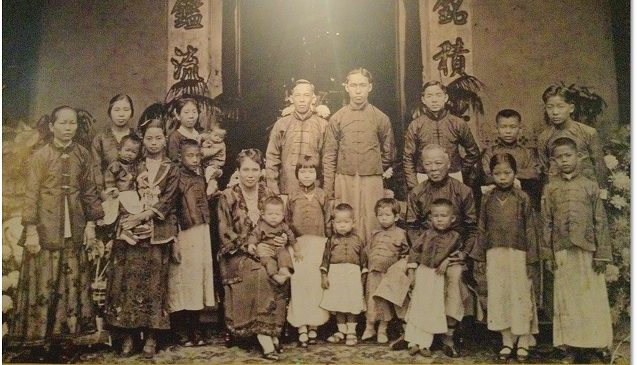Traditions & Culture
6 – Chinese family relationships

Photo : Sixtieth Birthday of Majoor Chinees Tjong A Fie, 17 August 1920, Medan ( KITLV Image code15567)
The Chinese has a complicated kinship system with a separate term of address for almost every position in the extended family. It is considered improper to address family members and relatives by their first names, particularly relatives belonging to the same generation of one’s parents, and above. So these terms of address are used instead, either on their own, or in combination with first names or nicknames.
From these terms of address, one will be able to know exactly how one is related to the other. One would be able to know whether it is a maternal or paternal relative, whether it is a relative by blood or by marriage, and the seniority, that is, whether it is a senior or junior relative.
To illustrate, the following are the basic terms for “aunt” in Mandarin, Peranakan and Hakka:
Father’s sister: 姑姑/gūgu (Mandarin); koh (Peranakan); kuku (Hakka)
Father’s elder brother’s wife: 婶婶/shěnshen (Mandarin); um (Peranakan); pak-meh (Hakka)
Father’s younger brother’s wife: 婶婶/shěnshen (Mandarin); encim (Peranakan); suk-meh (Hakka)
Mother’s sister: 姨媽/yímā (Mandarin); ee (Peranakan); ah-ee (Hakka)
Mother’s brother’s wife: 舅媽/jiùmā (Mandarin); ng-kim (Peranakan); kiu-meh (Hakka)
Confused, yet ? Well, see this FILM about an extended Chinese kinship system in Mandarin
Christopher Ng, May 2015
Sources:
- Chang, Q. (1981) Memories of a Nonya. Singapore: Eastern Universities Press.
- Gwee, W.T.H. (2006) A Baba Malay Dictionary: the first comprehensive compendium of Straits Chinese terms and expressions. Singapore: Tuttle Publishing
- Tan, C.B. (1988) The Baba of Melaka: culture and identity of a Chinese Peranakan community in Malaysia. Petaling Jaya: Pelanduk Publications.
- Tan, G.L. (1963) The Chinese of Sukabumi: a study of social and cultural accommodation, New York: Monograph Series.
- Personal Communication, Louisa A.K. Koh, 30 April 2015


